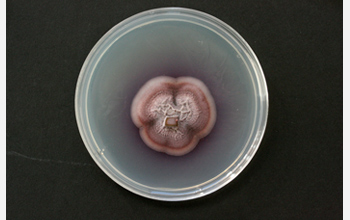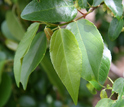News Release 08-195
Obscure Fungus Produces Diesel Fuel Components
Tiny organism illuminates new path toward biofuel production

Cultures of the fungus Gliocladium roseum produce hydrocarbons.
November 6, 2008
This material is available primarily for archival purposes. Telephone numbers or other contact information may be out of date; please see current contact information at media contacts.
A wild fungus has been found to produce a variety of hydrocarbon components of diesel fuel. The harmless, microscopic fungus, known as Gliocladium roseum (NRRL 50073), lives quietly within ulmo trees in the Patagonian rainforest.
Gary Strobel of Montana State University has found that the fungus produces many energy-rich hydrocarbons, and that the particular diesel components produced can be varied by changing the growing medium and environment of the fungus. The fungus even performs under low-oxygen conditions like those found deep underground.
Strobel's discovery suggests that fungi living in ancient plants may have contributed to the natural formation of crude oil, a slow process that occurs when organic matter is subjected to high pressure and heat under layers of rock.
"Time will tell if this microbe can be developed for useful purposes for mankind," said Strobel. He envisions these fungi, or their genetic material, being used in the future to purposefully manufacture hydrocarbons for fuel.
Before that can happen, researchers must figure out how to increase hydrocarbon yields from the fungus and find ways to supply the remaining hydrocarbon components needed for complete diesel fuel.
Strobel is now checking other strains of Gliocladium roseum for hydrocarbon production. The strain originally isolated from the tree produced annulene, a component of rocket fuel.
"Upon storage it diverted hydrocarbon production to simple things like octane and heptane," which are two components of diesel fuel, Strobel said. "As is the usual case in biology, if one microorganism can do nifty biochemical tricks, so can others."
"Dr. Strobel's research on a microbial route from biomass to hydrocarbon-based fuels is resulting in very exciting findings," said Bruce Hamilton, program director in the National Science Foundation (NSF) Division of Chemical, Bioengineering, Environmental, and Transport Systems, which funded the research. "This is a promising area of biofuels research, and it is wonderful to see his work move so rapidly into peer-reviewed, published literature."
Strobel's research appears in the November 2008 issue of Microbiology.
More information on Strobel and his research
-- Cecile Gonzalez, NSF cgonzalez@nsf.gov
-NSF-
-
Fungi known as endophytes live harmlessly in plant hosts.
Credit and Larger Version
Media Contacts
Cecile J. Gonzalez, NSF, (703) 292-8300, email: cgonzalez@nsf.gov
Tracy Ellig, Montana State University, (406) 994-5607, email: tellig@montana.edu
Program Contacts
Bruce K. Hamilton, NSF, (703) 292-8320, email: bhamilto@nsf.gov
Principal Investigators
Gary Strobel, Montana State University, (406) 994-5148, email: uplgs@montana.edu
Related Websites
Green Gasoline: A renewable petroleum alternative from plants: http://www.nsf.gov/news/newsmedia/greengasoline/index.jsp
Fantastic Fungus: Strobel’s earlier discovery of antimicrobial fungus: http://www.nsf.gov/discoveries/disc_summ.jsp?cntn_id=104473
Montana State University: http://www.montana.edu
The U.S. National Science Foundation propels the nation forward by advancing fundamental research in all fields of science and engineering. NSF supports research and people by providing facilities, instruments and funding to support their ingenuity and sustain the U.S. as a global leader in research and innovation. With a fiscal year 2023 budget of $9.5 billion, NSF funds reach all 50 states through grants to nearly 2,000 colleges, universities and institutions. Each year, NSF receives more than 40,000 competitive proposals and makes about 11,000 new awards. Those awards include support for cooperative research with industry, Arctic and Antarctic research and operations, and U.S. participation in international scientific efforts.
Connect with us online
NSF website: nsf.gov
NSF News: nsf.gov/news
For News Media: nsf.gov/news/newsroom
Statistics: nsf.gov/statistics/
Awards database: nsf.gov/awardsearch/
Follow us on social
Twitter: twitter.com/NSF
Facebook: facebook.com/US.NSF
Instagram: instagram.com/nsfgov



